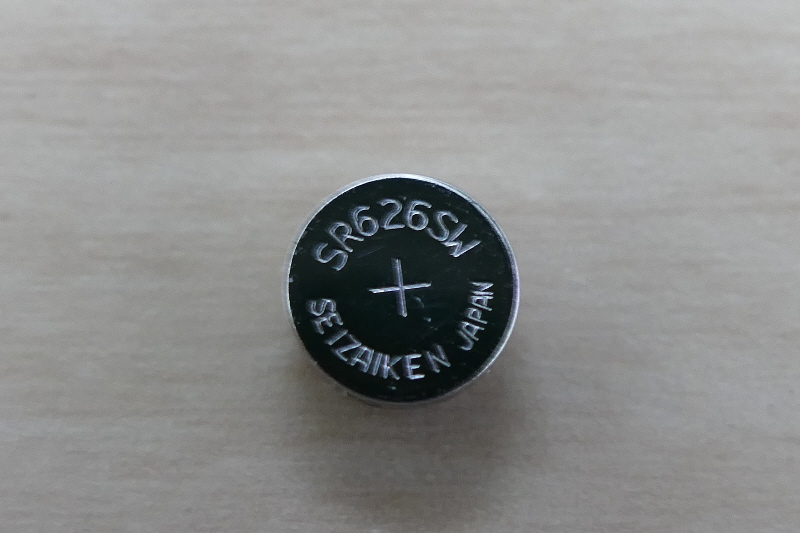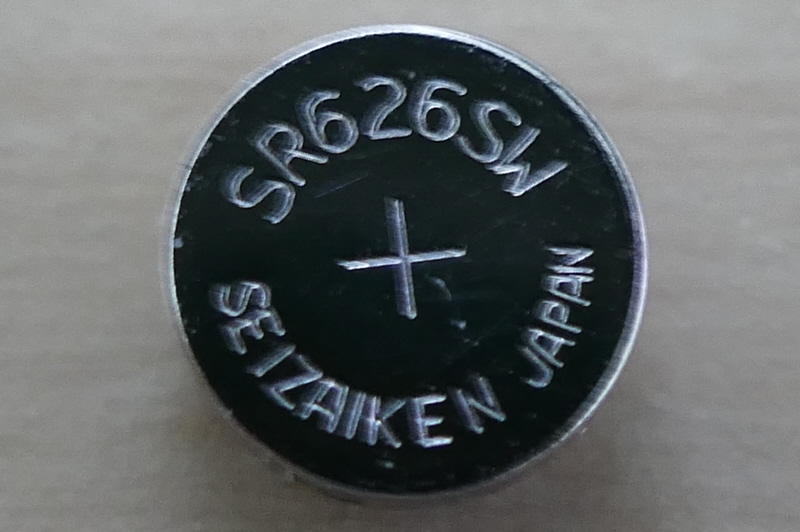Doug Kerr
Well-known member
As an "aside" in a recent thread, I reminded us that the notion that an image magnification of "1:1" as the criterion of "true macro performance" of a lens* is not all that meaningful.

Douglas A. Kerr: SR626SW watch batteryNote that no attention whatsoever was given to the lighting!
The battery has a diameter of approximately 6.80 mm. On the sensor, its image had an approximate diameter of 3.86 mm. Thus the approximate image magnification was 0.36 ("1:2.78").
If the point of a photograph of this object was just to document the face of the battery, in the highest available resolution, it might have been desirable for the setup to have yielded a magnification of perhaps 1.18 ("1.18:1"). That would have made the image 8.0 mm diameter, snugly almost filling the 8.8 mm high frame.
But of course I could have cropped the existing image:

Douglas A. Kerr: SR626SW watch battery
Now suppose I had instead shot this battery with a camera with a full-frame 35-mm sensor size (36 mm × 24 mm). Then to make the image of the battery fill that same fraction of the frame height (so as to make best use of the available resolution) would require a setup with an image magnification of 3.20 ("3.20:1").
Woof! Get out the extension tubes
So what image magnification do I need to take a "macro" photo of that battery?
Hmmm.
Best regards,
Doug
*We note here that it is of course not actually the lens properties alone that determine the magnification, but rather the properties of the whole camera "setup" The lens, in our sock drawer, has no maximum image magnification.
Here is a "grab shot" of an SR626SW watch battery I happened to have laying on my desk, taken with my Panasonic Lumix FZ1000 camera (with its "permanent" lens) in its greatest image magnification state:
Douglas A. Kerr: SR626SW watch battery
The battery has a diameter of approximately 6.80 mm. On the sensor, its image had an approximate diameter of 3.86 mm. Thus the approximate image magnification was 0.36 ("1:2.78").
The sensor size of that camera is 13.2 mm × 8.8 mm.
If the point of a photograph of this object was just to document the face of the battery, in the highest available resolution, it might have been desirable for the setup to have yielded a magnification of perhaps 1.18 ("1.18:1"). That would have made the image 8.0 mm diameter, snugly almost filling the 8.8 mm high frame.
But of course I could have cropped the existing image:

Douglas A. Kerr: SR626SW watch battery
Now suppose I had instead shot this battery with a camera with a full-frame 35-mm sensor size (36 mm × 24 mm). Then to make the image of the battery fill that same fraction of the frame height (so as to make best use of the available resolution) would require a setup with an image magnification of 3.20 ("3.20:1").
Woof! Get out the extension tubes
So what image magnification do I need to take a "macro" photo of that battery?
Hmmm.
Best regards,
Doug

